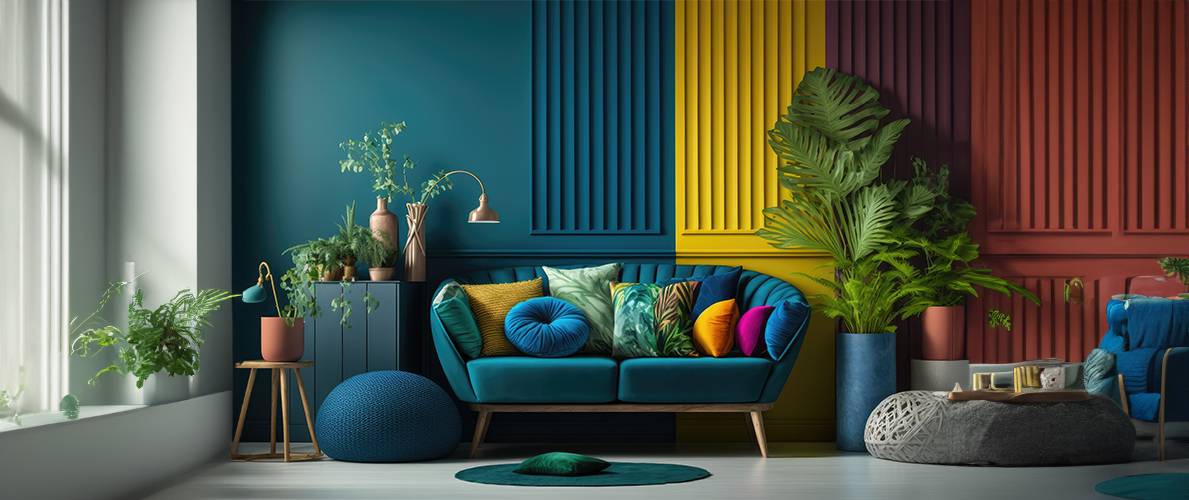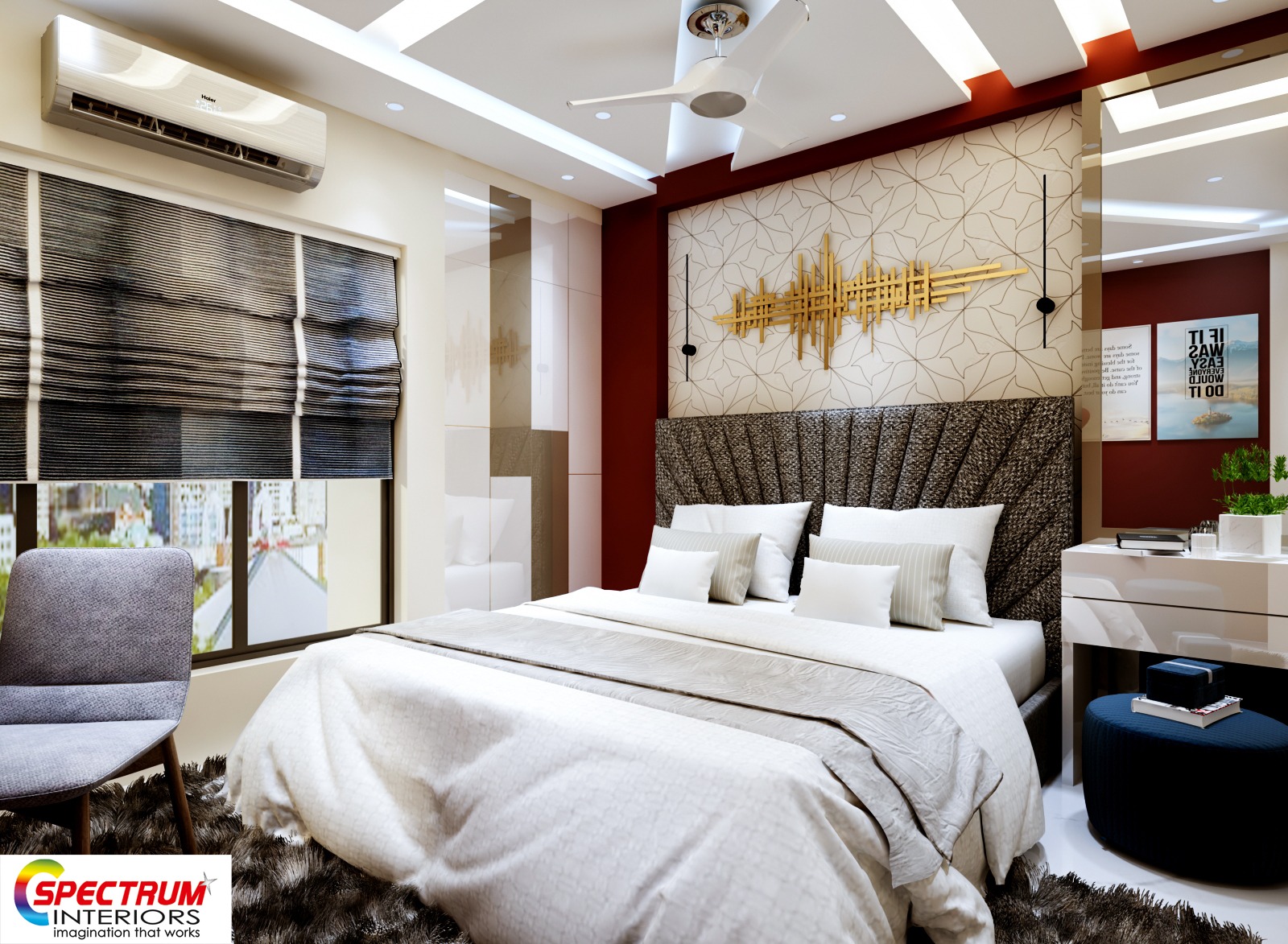Best-rated interior design firms offer innovative solutions.
Best-rated interior design firms offer innovative solutions.
Blog Article
Change Your Home With Crucial Concepts of Interior Decoration and Looks
The art of changing your home with the vital concepts of interior design and visual appeal requires a thoughtful strategy that integrates shade, equilibrium, and spatial awareness. By understanding the influence of shade theory and the importance of texture and patterns, one can create spaces that are not just aesthetically enticing yet likewise deeply individual. Attaining this balance includes more than mere decoration; it encompasses a calculated setup and a keen understanding of how each element interacts within a room. As we discover these foundational concepts, consider just how they may redefine your understanding of home and personal expression.
Understanding Shade Theory
Recognizing the concepts of color theory permits designers to develop spaces that resonate psychologically with residents while satisfying useful requirements. Each classification plays a crucial role in establishing consistency within a room.
The psychological effect of colors is extensive; cozy hues such as reds and oranges stimulate power and heat, while awesome tones like blues and environment-friendlies advertise peace and tranquility. Furthermore, using corresponding shades boosts aesthetic interest, creating striking contrasts that can elevate a space's charm.
Neutral shades, on the various other hand, function as a functional background, permitting various other style aspects to radiate. It is vital to take into consideration variables such as lights and the area's objective when choosing a color combination, as these can alter the perception of colors throughout the day.
Ultimately, a well-considered color pattern can change an area, promoting a sense of convenience and design that straightens with the occupants' preferences. Mastery of color concept is, as a result, a crucial skill for any interior developer aiming to create unified and welcoming settings.
Achieving Equilibrium in Style
How can developers achieve a feeling of equilibrium in their areas? Achieving equilibrium in design is essential to creating harmonious insides.
Asymmetrical equilibrium, on the other hand, counts on differing aspects that still attain a cohesive appearance. This method permits for more dynamic and casual arrangements, giving interest while keeping equilibrium. By very carefully selecting varying dimensions, colors, and structures, developers can create a visually engaging room that feels well balanced yet energised.
Radial balance highlights a main centerpiece with elements emitting exterior. This style is frequently seen in round layouts, where furniture and decor produce a cohesive surround that draws the eye inward.
Eventually, attaining balance calls for thoughtful factor to consider of range, percentage, and the partnerships between components. miami luxury interior design. By skillfully applying these equilibrium concepts, developers can transform spaces into atmospheres that really feel both cosmetically pleasing and functionally unified, boosting the total experience for occupants
Importance of Spatial Recognition

An eager feeling of spatial recognition allows designers to identify focal points within a room, directing the audience's interest to crucial functions while keeping a total feeling of unity. It likewise assists in the critical positioning of lights, which can dramatically influence the understanding of space and mood. Comprehending spatial partnerships enables the designer to provide to the details demands of occupants, guaranteeing that each location serves its intended purpose without jeopardizing aesthetic appeals.
Eventually, spatial awareness is important for taking full advantage of the capacity of any interior room. By very carefully considering the interaction between dimensions, design, and function, developers can produce environments that not just meet sensible demands yet likewise evoke a feeling of comfort and elegance, boosting the total living experience.
Integrating Texture and Patterns
Accepting a diverse variety of textures and patterns can dramatically improve the aesthetic and tactile charm of an interior area. The strategic use numerous materials-- such as timber, metal, material, and go to website rock-- creates deepness and interest, making a space really feel much more welcoming and vibrant. Integrating smooth surface areas with harsh textures can establish an equilibrium that attracts the eye and engages the detects.
When including patterns, think about both range and rep. Large patterns can act as prime focus, while smaller sized, refined designs look at more info can complement various other components without overwhelming the space. Layering patterns, such as pairing flower paddings with candy striped throws, adds intricacy and a feeling of consistency if executed thoughtfully.
It is additionally critical to keep a natural shade combination, making sure that textures and patterns interact as opposed to compete for interest. By picking a couple of essential textures and patterns, you can develop a combined aesthetic that mirrors your individual style while improving the total atmosphere of the room. Ultimately, the careful consolidation of these components can transform a mundane area into an innovative setting rich with personality and heat.
Customizing Your Space
Developing an area that reflects your individuality is crucial to attaining a truly welcoming atmosphere. Personalization in indoor design permits you to infuse your unique design and interests right into your home, transforming it from a plain sanctuary into a refuge that speaks to who you are. Begin by picking a color scheme that resonates with your feelings-- strong hues can invigorate, while soft tones provide tranquility.
Integrate artwork and decoration that reflect your interests, whether it be travel, nature, or abstract principles. Displaying individual collections, such as books, pictures, or mementos, can stimulate cherished memories and develop focal points within a room. In addition, think about customizing functional items, like upholstered furniture, to straighten useful link with your aesthetic choices.

Conclusion
To conclude, the makeover of a home through the necessary concepts of interior design and appearance necessitates an extensive understanding of color concept, equilibrium, spatial recognition, texture, and personalization. Each element contributes substantially to developing an unified and useful living environment - luxury interior design. By thoughtfully integrating these principles, individuals can improve the visual charm and emotional resonance of their areas, eventually promoting a home that shows distinct identities while offering comfort and practicality
Report this page